What to use for a drone?
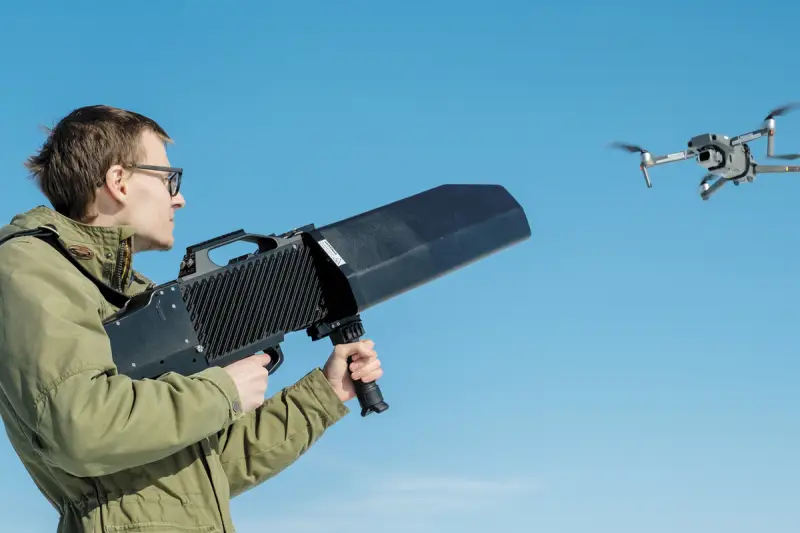
We continue the theme of “trench electronic warfare”. As it became clear from previous materials, the principle “for a large ship, a large torpedo” is fully observed here. The drone is the main goal of those on the LBS for many reasons. In just a couple of years, UAVs have become firmly established in everyday use, and the handy operator of a flying contraption is valued much more than a gunner.
If you look at the responsibilities that the former civilian drone took on, you begin to understand that there is something to think about:
- conducting reconnaissance at all levels, from platoon to division;
- fire adjustment;
- bombardment of enemy personnel and equipment with suspended ammunition, fortunately, craftsmen equally adapt both high-explosive fragmentation and shaped charges;
- escorting enemy columns and recording attacks on them by others drones;
- use of UAVs as communication repeaters;
- night patrols of LBS using thermal imaging equipment;
- kamikaze drones, including drone fighters.
In general, this list will take his helicopter into its rotors with dignity. And here we are talking about a former, excuse me, toy who was mobilized and sent to war. The toy has become such a threat that to combat it, they began to develop not only individual types of weapons, but also create complexes and develop counter tactics.
Today, what we call “trench electronic warfare” is so far represented only by means of sound (ears) and optical (eyes and binoculars) observation as a source of data (although the issue of detection drones Russian designers and engineers are working very fruitfully) and anti-drone guns as a device for neutralization.
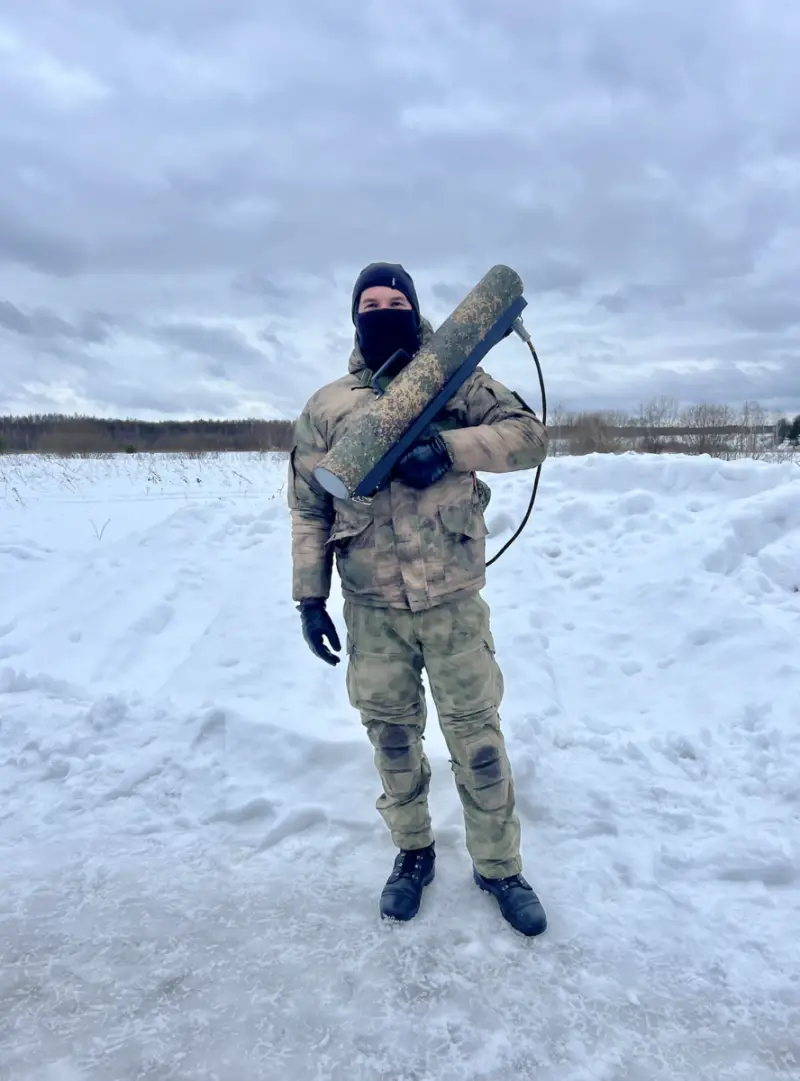
And today we will talk specifically about anti-drone guns, as mobile anti-drone defense devices are commonly called in the trenches.
Everyone already knows perfectly well what this device is. Often, the external anti-drone device (RCD) is a portable device that resembles weapon. Either some kind of futuristic firearm, or even a grenade launcher. In general, it is a housing inside which microwave range generators, a transmitting path and directional antennas are installed. Well, and the batteries from which all this is powered.
The operating principle is also incredibly simple. When a UAV is visually detected, the anti-drone defense operator directs the emitters towards the drone and presses the activation button. Generators generate energy that is converted into electromagnetic radiation, which causes the operator to lose communication with the drone or the drone receiver to lose navigation satellite signals.
This is due to the fact that the signal emitted by the anti-drone gun is many times stronger than the signals from the operator’s console and satellite navigation signals, since the source is much closer to the UAV receivers. The drone simply stops receiving and executing commands and then, depending on the models, UAVs behave differently:
- begin an emergency landing;
- trying to return to the starting point according to the program;
- they hang in place until the battery runs out and try to restore communication with the operator and navigation satellites.
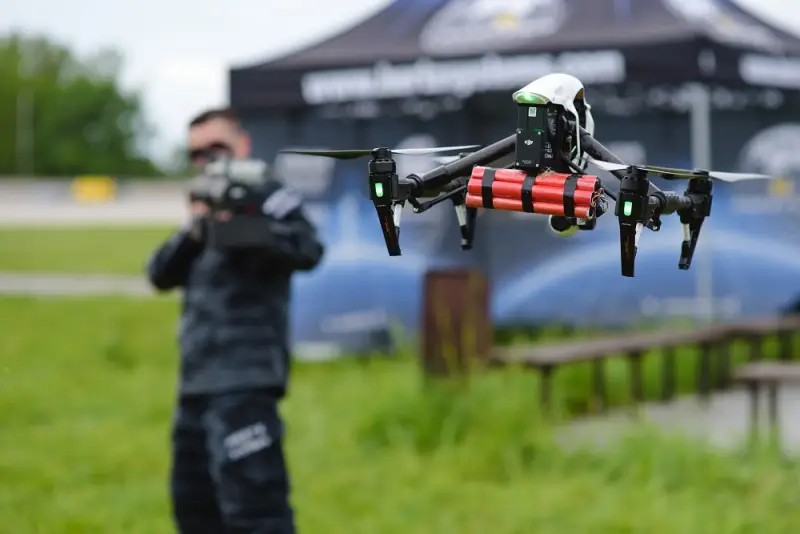
In any case, what happened for the sake of which everything was started: interruption of the drone’s flight mission, and in some cases, interruption of the career of the drone itself. But this takes time. And here everything depends on the battery capacity of the UAV and the anti-drone device.
Typically, UAV suppression lasts from 2 to 10 minutes. All this time, the copter is either hovering above the ground or landing, but is looking for ways to restore communication. And if at this moment the remote control runs out of battery power, the drone will simply restore communication and fly away. Or if the UAV has a powerful battery, the capacity of which exceeds the capacity of the remote control battery. Therefore, a charged battery for the remote control is like cartridges for a machine gun. Must be dry and warm.
There is one more important nuance that will be discussed when disassembling the remote control. They all work using microwave generators that are controlled by voltage. A decrease in the battery output voltage due to discharging or cooling will prevent the generator from delivering the necessary power to the antennas, which will lead to a drop in the suppression efficiency with an unpleasant result: the drone will fly away.
Of course, there are stationary remote control systems that are free of such disadvantages. But these systems need to be connected to the power supply network and generators, which looks fantastic in LBS conditions. However, such systems can do an excellent job of protecting industrial and other important facilities.
And of course, an intermediate option in the form of a mobile complex placed on a car chassis. But a car or an armored base is already an “adult” electronic warfare system, the use of which is associated with other problems.
Stationary and mobile systems, of course, are more efficient, primarily due to greater power than manual remote controls; in addition, higher-class systems can be equipped with thermal imagers and optics that allow them to operate at greater distances than manual remote controls. They make it easier to suppress and, most importantly, control the process of suppressing enemy UAVs.
However, here the question of quantity and subsequent quality arises. 10 manual remote controls per kilometer of front will create certain problems for the enemy using UAVs. 20 remote controls are guaranteed to make life very difficult, practically closing off the air. The question arises: can you imagine 20 mobile electronic warfare systems operating against drones at a distance of a kilometer? So I think it’s not possible yet.
The task of our military industry today is to saturate the advanced technology with modern means of combating drones. Then - the production of stationary anti-UAV systems in the required quantity to cover objects in the rear. This is a very difficult task, because we are not talking about tens or hundreds of remote control units. The count will be in the thousands.
But let's return to manual remote controls. The SVO brought an understanding of a new concept for the use of UAVs and forced the development of countermeasures in response. It’s unpleasant, but true: the new method of conducting combat operations with the massive use of UAVs involves maximizing the saturation of the battle line with both unmanned aerial vehicles and means to counter them.
Today, it is possible to saturate LBS as much as possible exclusively through manual remote control units, since they are cheap and easy to manufacture. Yes, this is a plus, but the fact that the range of operation of these remote control systems due to exclusively visual detection of drones does not exceed 500 meters is, alas, but it is impossible to change the situation for now.
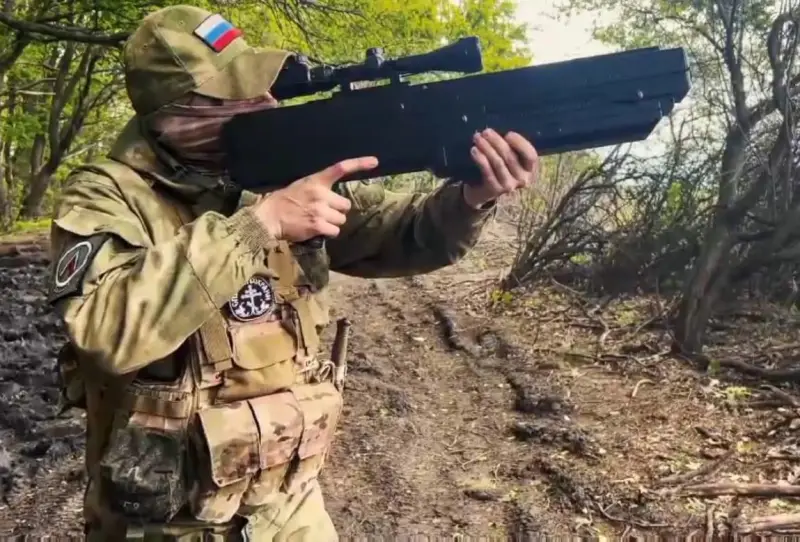
Today, drone fighters are offered a fairly wide range of hand-held remote controls, some are purchased by the Russian Ministry of Defense, and some are purchased by the fighters themselves or with the help of volunteers. The models are quite different, and so are the reviews about them. It is worth noting that Russian developments are much more popular among “trench electronic warfare” fighters, since they have more advantages over Chinese ones.
With the help of people knowledgeable in electronic warfare issues, it was possible to make a certain rating of manual remote controls that are used in air defense systems, both domestically developed and imported from China. We will talk about current models, since in almost two years SVO some models have already gone into disrepair. history, becoming outdated literally before our eyes. Or their characteristics turned out to be too weak initially to combat drones.
Domestic remote control systems
1. LPD-801 from the company “PPSh Laboratory”, Moscow
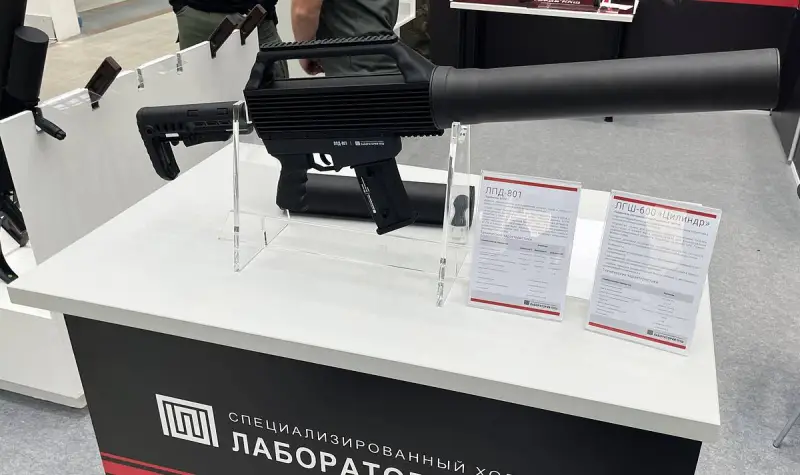
This gun, which was very popular long before the SVO, appeared in Russia and received recognition. The company “Laboratory for Countering Industrial Espionage” has been supplying equipment since 2002, and the company was founded even earlier, in 1992.
LPD-801 is distinguished by its design, a wide range of frequencies at which suppression occurs, and the delivery set includes a spare battery with a discharge indicator. As options, it is possible to equip it with an optical, thermal imaging or collimator sight.
The disadvantages, according to those who operated this remote control, are the inconvenient shape, which makes it difficult for the operator to suppress for a long time, the small capacity of the batteries and the low power of the emitters. Well, the cost of the product is very high, about a million rubles.
Features:
Band I, MHz: 2400 ÷ 2483.5 (10 W)
Band II, MHz: 5725 ÷ 5850 (5 W)
Band III (GPS, Glonass, Beidou, Galileo), MHz: 1559 ÷ 1610 (4 W)
Range (as declared by the manufacturer): up to 1000 m
Weight: 3,5 kg (battery – 0,6 kg)
Cost: about 400 rubles.
2. “Argus-Antidron” or ARPA-600 from the company NPO “Kaysant”, Moscow
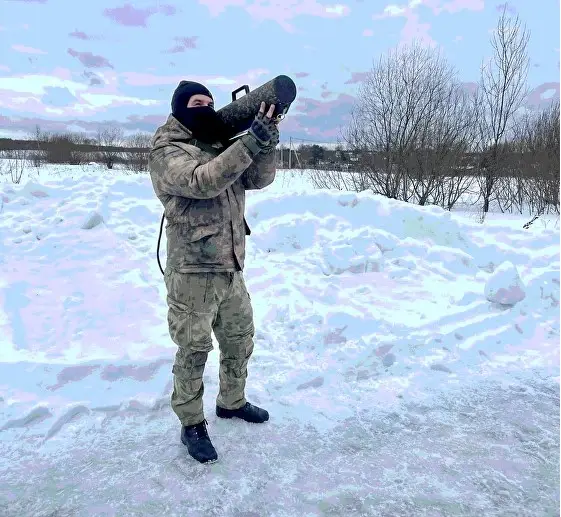
The main advantage of this remote control, which delights operators, is its shape. Not for a “rifle”, but for a “grenade launcher”, placed on the shoulder and with batteries on the back, on the belt, in a bag or backpack. It is considered the most convenient remote control for long-term control of a UAV during suppression.
It also has a greater range than most analogues due to the use of directional antennas with increased gain. There is a “machine” attached to the remote control, from which you can work like a “machine gun”.
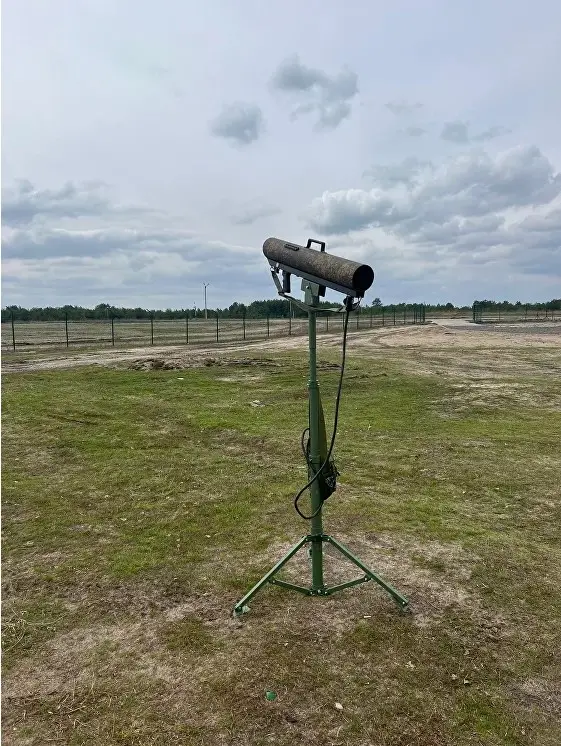
Features:
Bands: GPS, GLONASS, GALILEO, BeiDou (L1), 900 MHz, Wi-Fi 2.4 GHz, 5.8 GHz
Radiated power per channel: up to 30 W
Working time: up to 4 hours
Operating range: 1000-1500 m (confident suppression up to 1000 m, then depends on external conditions), according to GPS operating range up to 3 km.
Weight: 4,8 kg, of which the battery is 1,7 kg.
Cost: 480 000 rubles
3. “Harpoon-3” from the company “Automation and Programming Technologies”, St. Petersburg
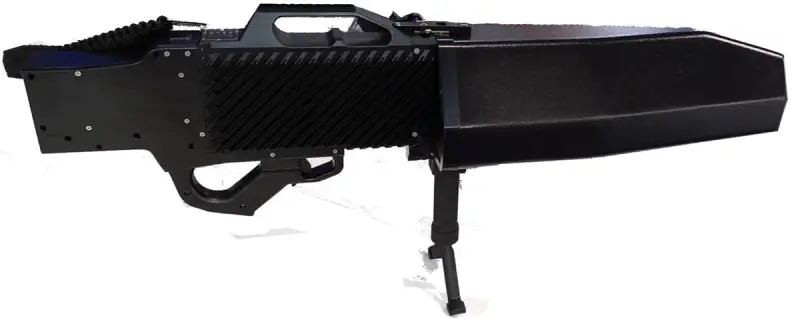
"Garpun-3" is by far the most expensive remote control in Russia. The cost is above 2 million rubles, but, perhaps, this is the case when the cost is justified. "Garpun-3" covers almost all frequencies on which UAVs operate, and has 7 suppression channels.
It has practically no drawbacks, except, perhaps, the price.
"Harpoon" operates in 2 modes:
- blocking the control channel (the UAV returns to the starting point using GPS, GLONASS);
- blocking of the control channel and navigation system (the UAV makes an emergency landing).
The effective suppression range of UAVs is up to 2 km.
Weight: 6,5 kg.
Cost: 2 rubles
It has two versions, mobile and stationary. In the case of a stationary version, it is installed on a rotary mechanism controlled from a remote control.
Features:
Operating frequency ranges, MHz:
433 (430-436)
868 (863-870)
900 (902-928)
1575,42/1602
2400 (2400-2483)
5200 MHz
5800 (5725-5875)
It is used in limited quantities in the Northern Military District; there were purchases through the Ministry of Defense.
4. PARS “Stupor” from the company “Stupor”, Moscow
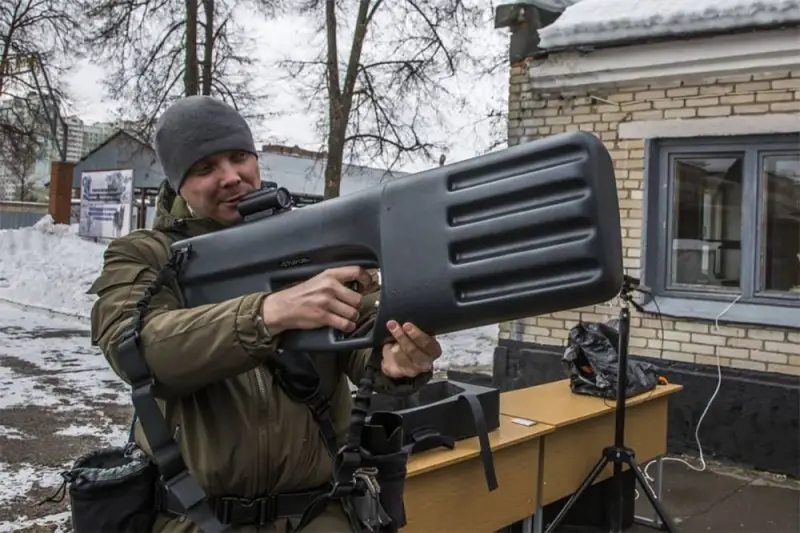
It features a futuristic design and ergonomic shape of the gun. In general, the PARS remote control unit (Device for activating self-rescue modes) is one of the first on the domestic market. Initially, they were intended to protect private homes from annoying drones of neighbors and curious people precisely by activating the automatic return of the UAV to the “Home” point. An additional bonus is the price of the complex, from 600 thousand rubles. The Stupor company is constantly working to improve the capabilities of its remote control systems.
Features:
Bands: GPS, GLONASS, GALILEO, BeiDou (L1), Wi-Fi 2.4 GHz, 5.8 GHz
Range: up to 500 m
Weight: 5,5-6,5 kg
Cost from 380 to 000 rubles depending on the model
5. “REX” from the company ZALA AERО, Izhevsk
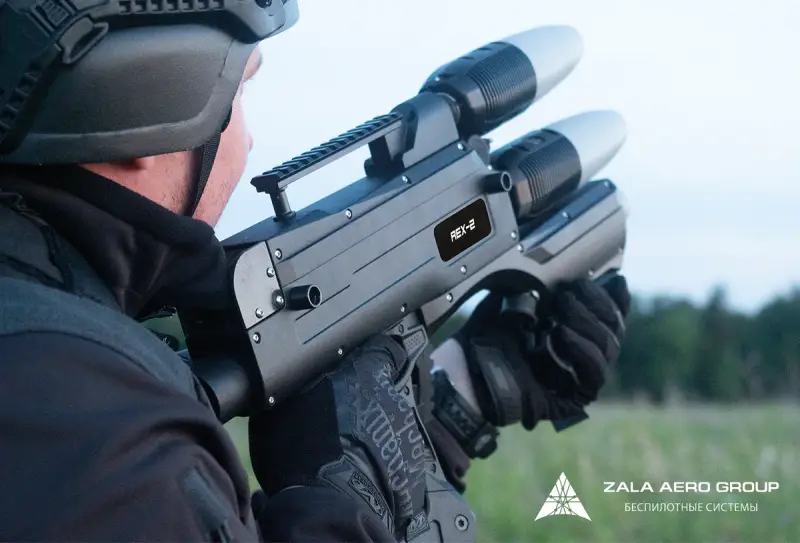
The REX remote control is interesting because it was developed by specialists who themselves create drones from the ZALA AERО company, which is perhaps the undisputed best UAV manufacturer in Russia. That is, it was created by those who are more than well versed in UAVs.
This is the world's most compact remote control and one of the lightest (3 kg). In addition, the remote control is modular, that is, it is possible to configure it for specific tasks: suppression of control channels and information transmission of drones, suppression of the navigation system, Wi-Fi channels and mobile communications. You can also optionally install a video recorder, strobe light, laser and sight.
This allows you to use the REX remote control in many situations other than working with UAVs. For example, to combat improvised explosive devices that are activated using a mobile phone signal. If suspicious objects are detected, you can block radio communication and wait for the sappers to arrive.
Remote control cannot boast of widespread use. It is also not available for free sale, possibly until all certificates are received.
Features:
Bands: 2,4 GHz, 5,8 GHz, SNS.
Operating range: up to 1200 m.
Weight: 3 kg.
It is known that a trial batch of “REX-1” was purchased by the Ministry of Defense for testing; there is no information about the use of “REX” in the Northern Military District.
6. PD-709 “Sling” from “Protection System” from Yekaterinburg
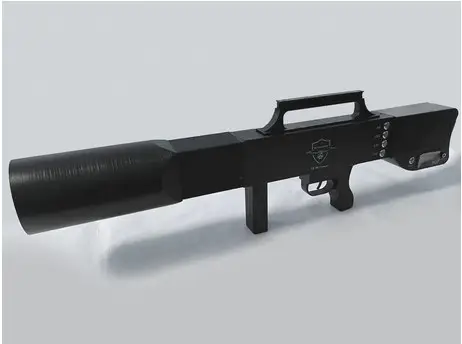
The only drawback of this system is the built-in battery. That is, 2 hours in suppression mode - and that’s it, you need to take it away and put it on charge. It can be equipped with an additional remote battery, but in my opinion this is not a complete solution to the problem.
The remote control is quite lightweight, depending on the modification it operates in 4 or 6 ranges. Optionally, the number of channels can be increased from the basic 4.
Frequency range and suppressed standards:
- GPS L1/Galileo E1/Glonass L1/BeiDou B1: 1 to 520 MHz
- Wi-Fi 2,4: from 2 to 400 MHz
- Wi-Fi 5,8: from 5 to 720 MHz
- RC868/915: 860 to 930 MHz
Operating range:
- in suppression mode up to 2 km
- in navigation lock mode up to 4 km.
Weight 5,2 kg.
Cost 417 000 rubles
7. PD-706 “Crossbow”.
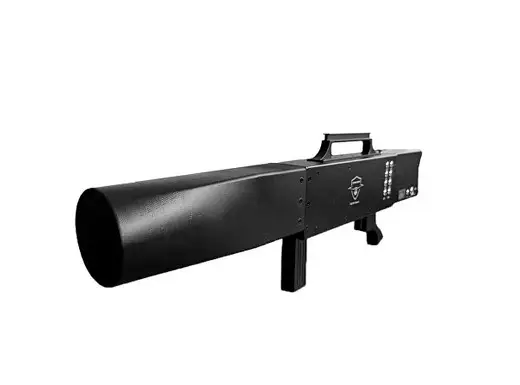
Also from Yekaterinburg craftsmen, it is a more serious development than the “Sling”. The remote control has already implemented the ability to replace the battery “in the field”, and the power has been increased to a virtually record 200 W, which makes the “Crossbow” one of the most powerful remote controls. It is equipped with an optical sight, and optionally with any sighting equipment. Number of suppression channels: 8. Quite a convenient solution with the ability to connect an external 24V power source, which makes it possible to “farm” in field conditions with car batteries, for example. But the operating time from its own battery is only 1,5 hours.
Frequency range and suppressed standards:
GPS L1/Galileo E1/Glonass L1/BeiDou B1: 1 to 520 MHz
RC1200: 1100 to 1400 MHz
Wi-Fi 2,4: 2 to 400 MHz
Wi-Fi 5,8: 5 to 725 MHz
Wi-Fi 5,2: 5 to 150 MHz
RC868: 860 to 873 MHz
RC915: 902 to 928 MHz
RC438: 400 to 450 MHz
Weight: 7,5 kg
Cost: 575 000 rubles
Chinese remote control
A very funny result awaited here. At first it seemed that here it was, a huge industry in China, which was driving thousands of these remote control units. No, she sells thousands of anti-drone guns, but the assortment, to be honest, was not only surprising - it killed me on the spot.
Having spent quite a decent amount of time studying the Chinese remote control market, I found out this thing: all the dozens of models that are offered to us from the Middle Kingdom are, in fact, two basic developments.

1. "Harpy".
She is also “Combat”, “Harpoon”, “Meldana”, “Ataman”, “Ayrat”, “MX3”, “Dragoon”, “DROGUN 4”, “Dronun”, “ML-7XL” and so on ad infinitum.
One of the most common remote control units, actively traded on Avito at a price of 120-150 thousand rubles. It has many versions with large differences (from 4 to 8 channels of suppression, from 10 to 20 watts of power per channel, and so on), which allows you to label them as you please.
The advantages are the price, a wide range of designs, and strong transport cases. Possibility of mounting optics or strobe.
The downsides are frankly weak batteries and low reliability, mainly caused by poor build quality. As they told me: when you hug a Harpy into a trench because mines are flying, you can be sure that something will break. The only question is what will break. In general, operating the Harpy without a roll of metallized tape and a can of epoxy resin in stock is a very big risk.
The second disadvantage is usually called emitter antennas with a very low gain.
Features:
Range: 433, 900, GPS L1, L2, L5, WIFI 2.4G, 5.8G
Range: up to 1 000 m
Weight: 4,3 kg.
In general, Russian craftsmen have learned to refine the “Harpy” to a completely competitive state, but even without that, in the trenches of the Northern Military District it is the most common remote control. Price decides, as they say.
2. "Teltos", aka HY886.
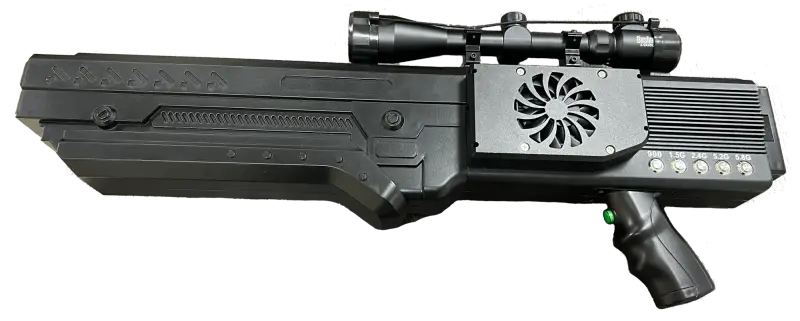
Everything is the same, different manufacturer, but in general, more expensive than “Harpy”. There is, of course, an outright conversion from a toy, “Drone 1200,” but this is generally a frivolous experiment in stuffing electronics into the plastic body of a toy gun. But they were able to insert the generator blocks inside and hang the antennas on top.
The only thing they couldn’t do was come up with cooling, which is why the “1200s” burned in batches, because at one time they were brought in in abundance due to their cheapness.
But the Chinese would not be Chinese if they had not worked on the topic. And on later versions, the cooling unit with fans was attached directly to the product body.
In general, it is very difficult to say how many “Harpies” and “Teltos” are in circulation, because here you need to understand the basics of Chinese production. And they are as simple as five kopecks: “here and now, the rest is not important.”
That is, today there are components in warehouses for assembling 8-channel remote control units with a power of 140 W - we do it. No - it will make 6 channels and 120W in the same housings. And so on. And all this will be “Harpy” or “Teltos”. Different numbers at best, the base is the same, but can you imagine how many variations you can collect on emitters alone? And they collect! So much so that the devil will break his head later, especially if he, the devil, needs to get something from spare parts.
There are dozens of variations. And in order not to get confused themselves, the Chinese do not make different names. But this is what our traders do quite routinely. It is no secret that anyone can order a batch from manufacturers in China. A batch of anything. And the Chinese, the guys are more than simple in this regard, will give you any name you want. One that you will like, for mere pennies, without asking for any trademark registrations. It's normal, this is China.
They don't care what IT will be called where it goes. The most important thing for them is the money that went to them. The rest is secondary.
And that's exactly how all these additional titles come about. It’s especially depressing to see Ali’s “Harpoon” for 347. Which is very much “Teltos”, but under the “Harpoon” brand, but, you know, has nothing to do with the St. Petersburg development. But everyone knows that Harpoon-000 is something. Some people take full advantage of this.

This is "Harpoon-2"

And this is "Harpy"
The reliability of Chinese remote control systems cannot be compared with Russian products, this is understandable. But again, the price... And instead of one “Harpoon” on the front end there may be a dozen and a half “Harpies” of not the worst configuration. And this, you know, decides...
And no matter how much the drone fighters of the RF Armed Forces lick their lips at domestic products, I will not reveal the great secret that 7 out of 10 remote control units on LBS are “Chinese”. Alas, this is the truth from which there is no escape.
Here, of course, there is a question of price and availability, because ordering on Ali Express is often easier and more profitable in terms of money. Who is ordering? That's right, volunteer helpers who count every ruble. And therefore, no matter how luxurious the Harpoon is and how comfortable the ARPA-600 is, they are more likely to buy the same Harpy.
Information